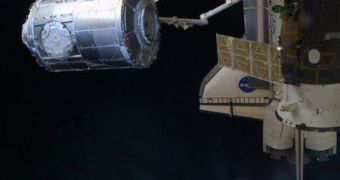Though the first heat shield inspection of the STS-130 mission revealed no significant damage to the shuttle's defense mechanism, engineers at NASA have been working since then on determining whether two minor glitches could have any impact on Endeavor's landing. Using data collected by the astronauts employing the sensor-laden observations pole, and images taken by flight engineers aboard the International Space Station as the spacecraft was on final approach before docking, the experts investigated closely the damage that these two instances could produce.
They concluded recently that the spacecraft is at no risk for landing, and that its heat shield is not imperiled in any way. Regardless of this outcome, the astronauts flying aboard Endeavor will conduct an additional inspection the day after they depart from the ISS. The last survey is meant to detect signs of impact that may have come from collisions with micrometeorites, and other pieces of space debris, while Endeavor was docked to the ISS for more than a week. Experts in charge of the shuttle's safety announced a few days ago that two bits of the heat shield were protruding, and that one of the thermal tiles making up the shield was cracked, in a place where it had already been fixed once before.
According to LeRoy Cain, who is the deputy space shuttle program manager at NASA, none of the three affected components could have any major impact on Endeavor's return, even if they separate from the spacecraft during the fiery descent. The protruding ceramic inset was discovered right under the shuttle's window, while the cracked tile is located on Endeavor's roof, outside of the area filled with black tiles that is generally recognized as the heat shield. NASA experts “reviewed all of that data and we determined that the vehicle is cleared for safe deorbit, re-entry and landing,” Cain reveals.
The reason why the American space agency takes all these necessary precautions is because a few loose tiles in the heat shield was the reason the space shuttle Columbia disintegrated and burned up upon atmospheric reentry, in 2003. When the mission took off, a few pieces of insulation foam fell from the external fuel tanks, and slammed into the heat shield, dislodging a few tiles. The spacecraft successfully completed its mission, and then attempted reentry, but no surveys of the heat shield were conducted during the entire duration of the flight, Space reports.

 14 DAY TRIAL //
14 DAY TRIAL //